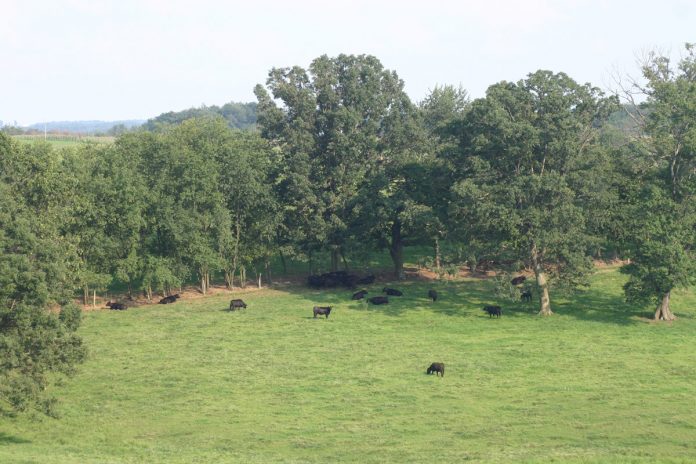At some time of the year, all livestock managers consider clipping the pasture.
Fields are most frequently clipped in the fall, but is this the best time for this practice? Opinions vary as to whether pasture clipping has merit.
Some of those who promote clipping pasture state that clipping helps to control weeds, keeps plants more vegetative; may improve forage quality, and may reduce incidence of pinkeye.
Timing
The timing and frequency of pasture clipping influence whether the above-mentioned benefits are achievable.
In addition, cost associated with pasture clipping must be considered with the Ohio Custom Rate 2016 publication listing the average bush hogging custom rate charge at approximately $18 per acre.
It is obvious that bush hogging is expensive, so is it the most cost-effective practice?
Weeds
As far as weed control goes, anyone who has clipped a pasture knows in order to achieve any real benefit it will have to be clipped more than once.
Additionally, weed response will vary based on the time of clipping, and what weeds one is attempting to control.
Certainly, managers hoping to achieve a sustained weed control response would need to clip a minimum of two times per year and would have to clip weeds prior to hard seed formation.
Quality
As for the argument that clipping improves pasture quality, what factors become important?
It is accepted that vegetative plants are generally more nutritious, and that leaf tissue of forage is generally of higher nutritional quality.
If one is attempting to maximize leaf production and reduce indigestible fiber content, the timing of clipping would be of utmost importance.
The additional benefit of managing the forage canopy is that lowering the height of the cool season grass sward may promote the growth of legumes like clover.
Legumes have high nutritional quality and provide nitrogen to the pasture sward. This would be a benefit to most ruminant livestock species.
Forage type
The majority of pastures in Ohio are cool season grasses, and the majority of those South of interstate 70 have a tall fescue component.
Unfortunately, a common variety of tall fescue, Kentucky 31, may contain alkaloids associated with negative effects on livestock performance.
Compounds produced from fungal endophyte accumulate alkaloids at the base of the stem and in seedheads of infected fescue.
Managing for reduced seedhead production and not overgrazing has been shown to improve animal performance.
My question is, do we need a tractor to manage the pasture canopy or can this be accomplished through proper grazing management?
To consider
The following are questions one might consider before clipping a pasture.
- Can I harvest excess pasture for hay?
- Can I rotate through pastures more quickly in the spring to help set back forage maturity?
- Have I properly managed grazing?
- Does livestock management contribute to the situation evident in pastures?
- Have I utilized a soil test as a tool for evaluating crop nutrients?
Clipping
Clipping is a tool for pasture management. Remember one can manage pasture using more than just machinery.
If one does clip, be cognizant of the influence of timing and frequency on the desired outcome.













